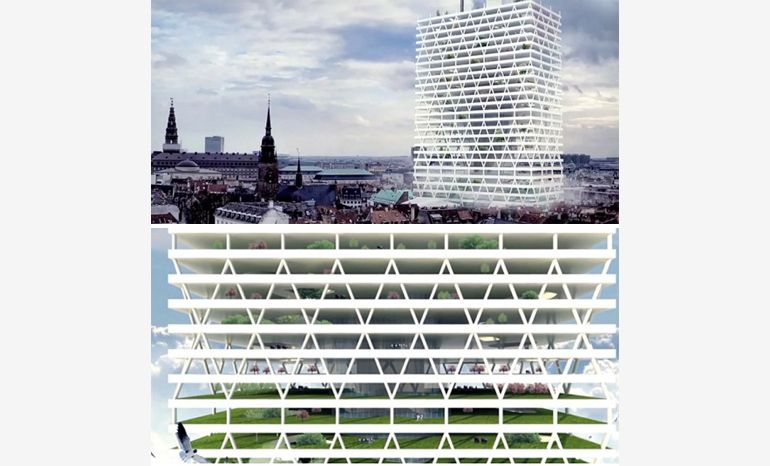According to United States Census Bureau, nowadays there are over 7 billion people in the world and ONZ claims that till 2100 this number may increase even to 4 billion. It is expected that in the nearest 4 years the population of inhabitants in the age of 65 years will increase by three times in developing countries. This fact is a big problem related to gravesites, especially in those cities where there are less and less unbuilt areas. The creation of new and the extension of foregoing cemeteries would mean the loss of agricultural lands. Therefore, just like in case of residential, office or commercial structures, the solution is to build not across but upward – the realization of several hundred meters skyscrapers.
Memorial Nécropole Ecumenica in Brazil
The highest cemetery in the world – Memorial Nécropole Ecumenica – is located in Santos city in Brazil, on green areas, however in the neighborhood of office and commercial center. The building of 32-tier skyscrapers started in 1983. Initially, the project was composed of 14 floors, on which 14 000 people could have been buried. Nowadays, the number of places intended for decedents totals over 40 000 and the building’s height reaches 108 meters. In the building there is a possibility to hire one place or the whole room. The annual cost of a lease – considering the most expensive option – amounts even 105 000 dollars. The building, in which funerals may take place day and night in 365 days in a year, is equipped with chapel, gardens, waterfalls, lagoon and gastronomic services.
Moshka Tower Cemetery in Mumbai
The tower’s project in Mumbai envisages burial for four main cultures and religions which are accumulated in the city’s surroundings (Hindu, Muslim, Christian and Persian). In the building there will be shrines, places for prayers and meditation. The façade, in turn, will be covered with vegetation which absorbs heat and carbon dioxide. Furthermore, the authors of the conception assume that there will be a service of incineration in technology which does not pollute the environment.
Flexible skyscraper in Norway
The tower designed by Norwegian architect Martin McSherry was prepared for a contest organized in 2014 by Nordic Association for Graveyards and Crematoria, the aim of which was to start a discussion about possibilities of burial in a built-up city. The skyscraper forms a steel shell which constitutes a frame of cemetery located on each floor of the building. Seemingly, the cemetery looks quite normal – it has grass growing on it, there are trees, benches and memorials, only that we are standing several hundred meters above the ground and we have another level of graves just over our heads. Moreover, Martin McSherry envisaged a crane which, if necessary, will be used while building other tiers of this soaring necropolis.
Vertical cemetery in Paris
According to authors, Vertical Cemetery is a conception which may be another, next to the Eiffel Tower, height symbol of Paris. Thanks to an open core, which is located in the center, the natural light would reach the building from the outside, and there would be an artificial lake on the ground floor. Graves, in turn, would be located around corridors, leading along the core. Each grave would be marked with a memorial and symbolic fiber on the tower’s elevation.
Reversed skyscraper
In opposition to conceptions mentioned above, this project of necropolis is a reversed skyscraper, reaching 250 meters deeply into the earth, revitalized to the shape of a huge screw. The idea – although innovative – in fact has its origin in the oldest humankind myths about underground world of the dead.
The projects of funereal cemeteries seem to be practically justified – for instance, the lack of place for graves in Norway results in the fact that each descent has provided only 20 years of resting. Actually, a new cemetery industry has developed – injection of special substances into the grave in order to quicken the process of putrefaction.
Will modern architects and urban planners meet the problem of the lack of free municipal areas for necropolises? Will conceptions of several hundred meters growing with each generation be successful in the nearest future? The mentioned designs stir up controversies, although inhabitants of Santos have certainly accustomed to it…




